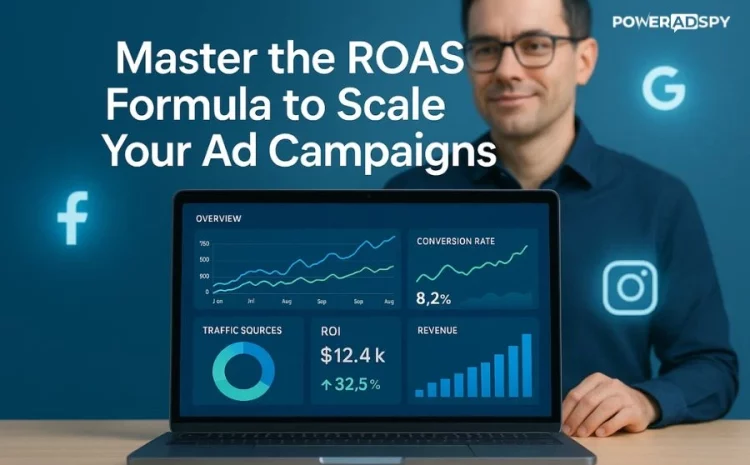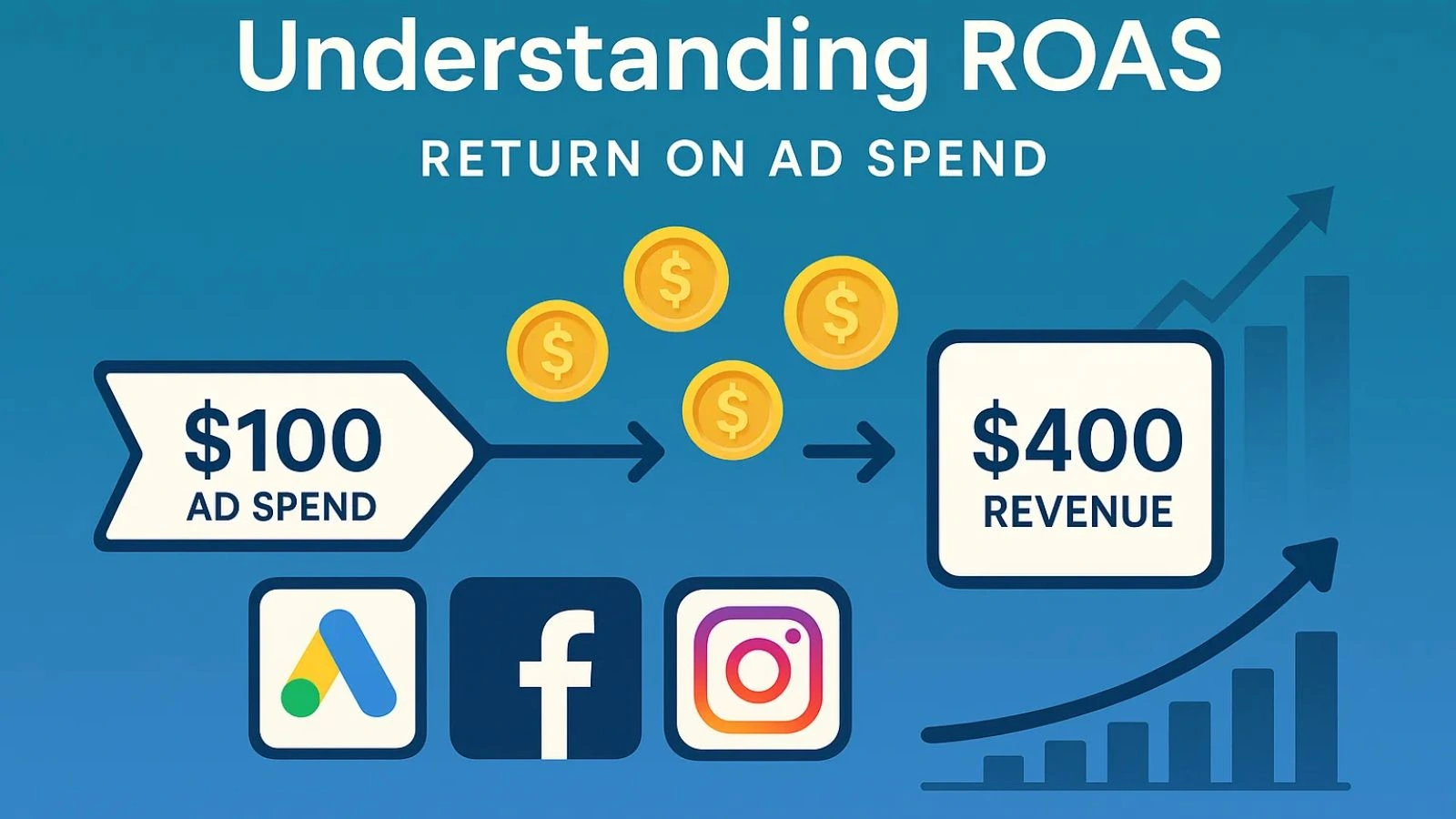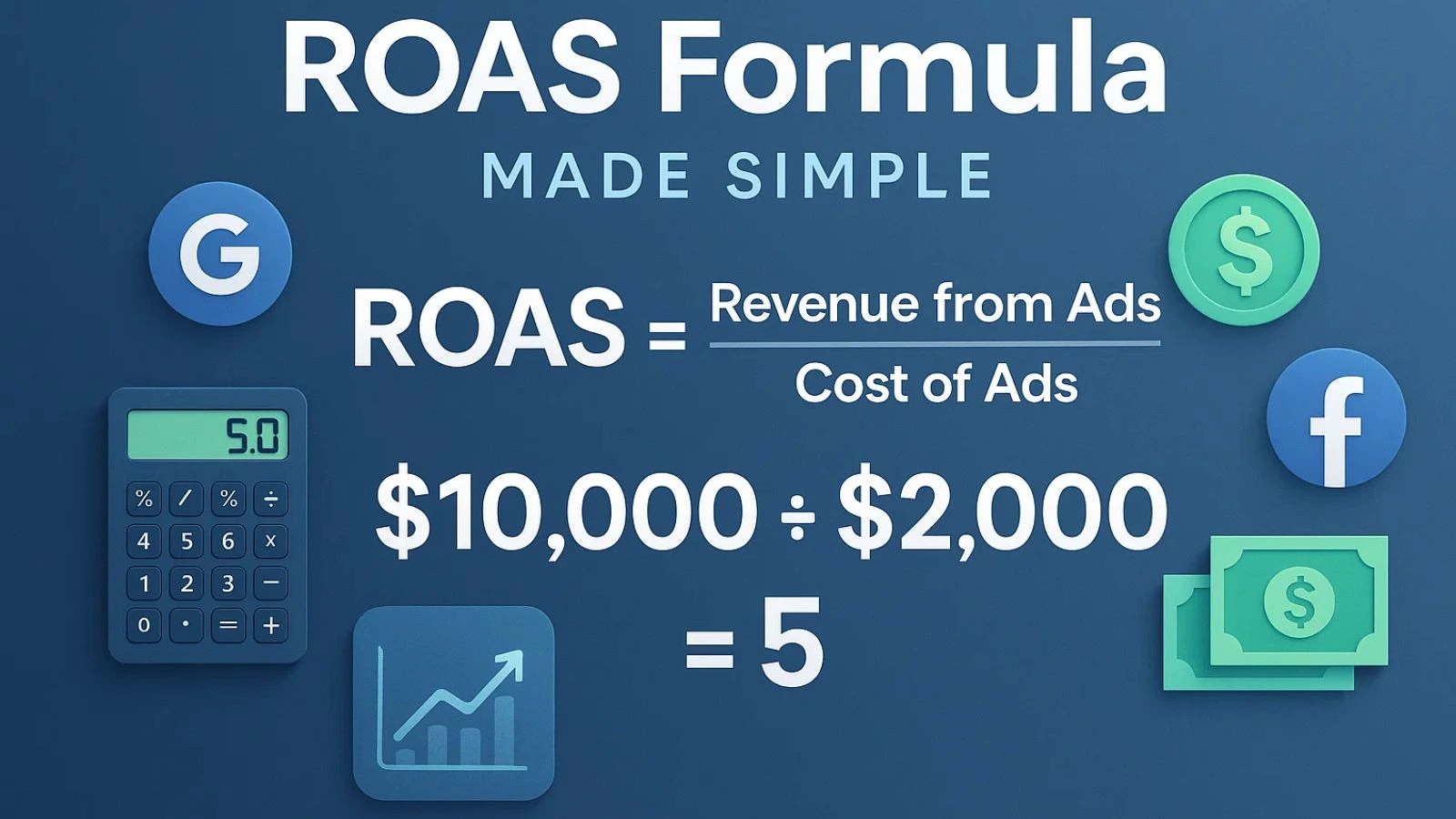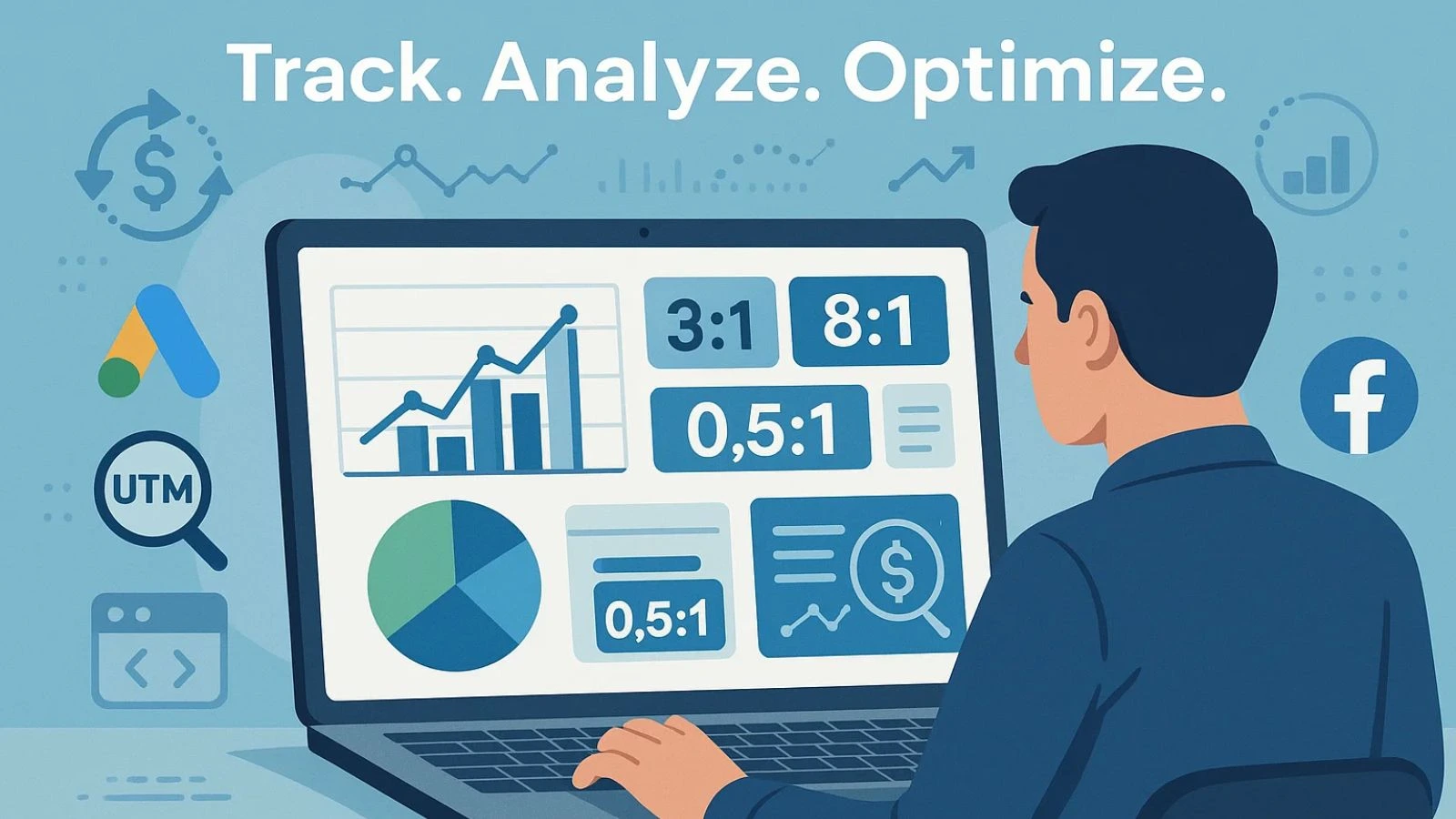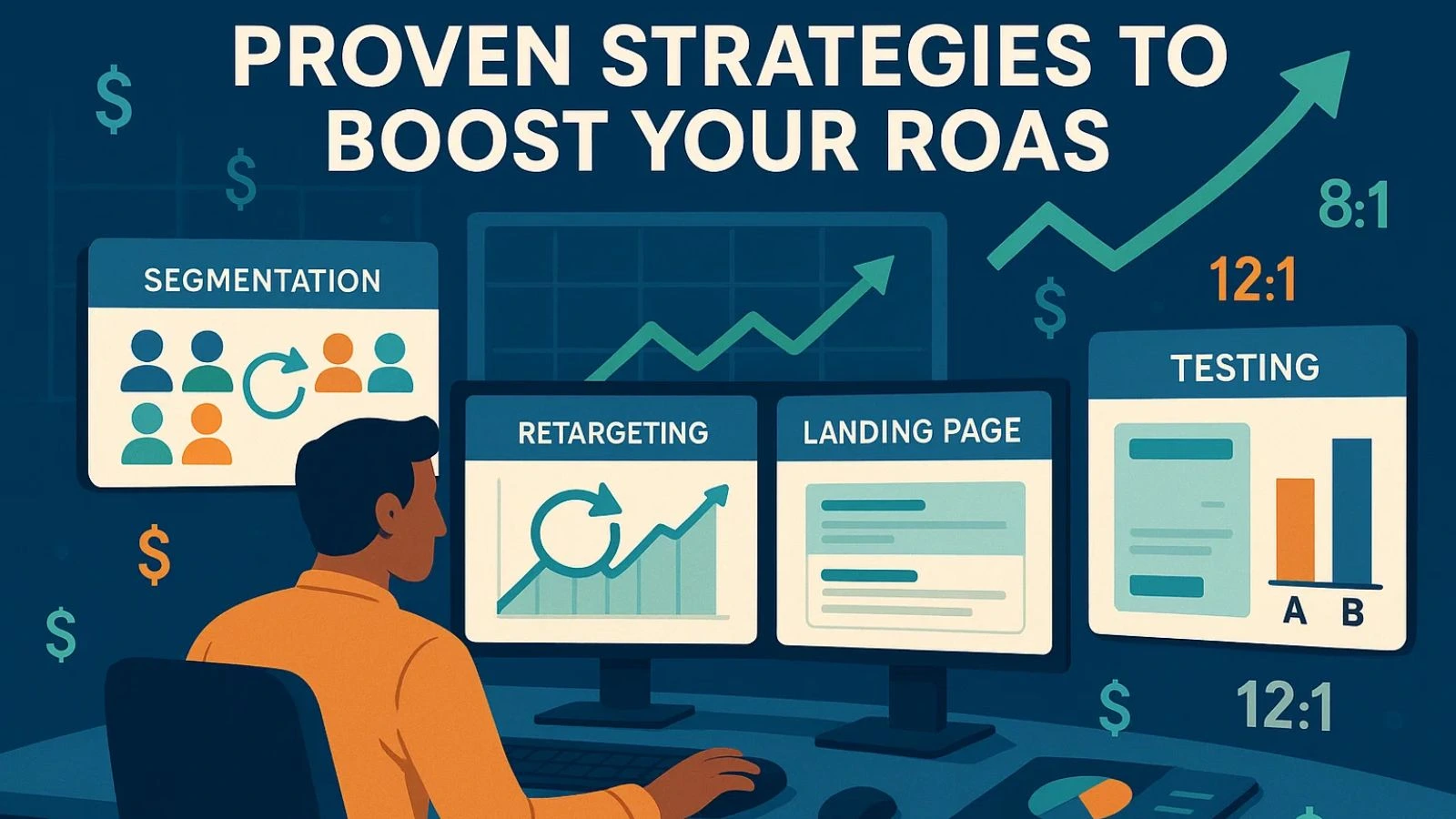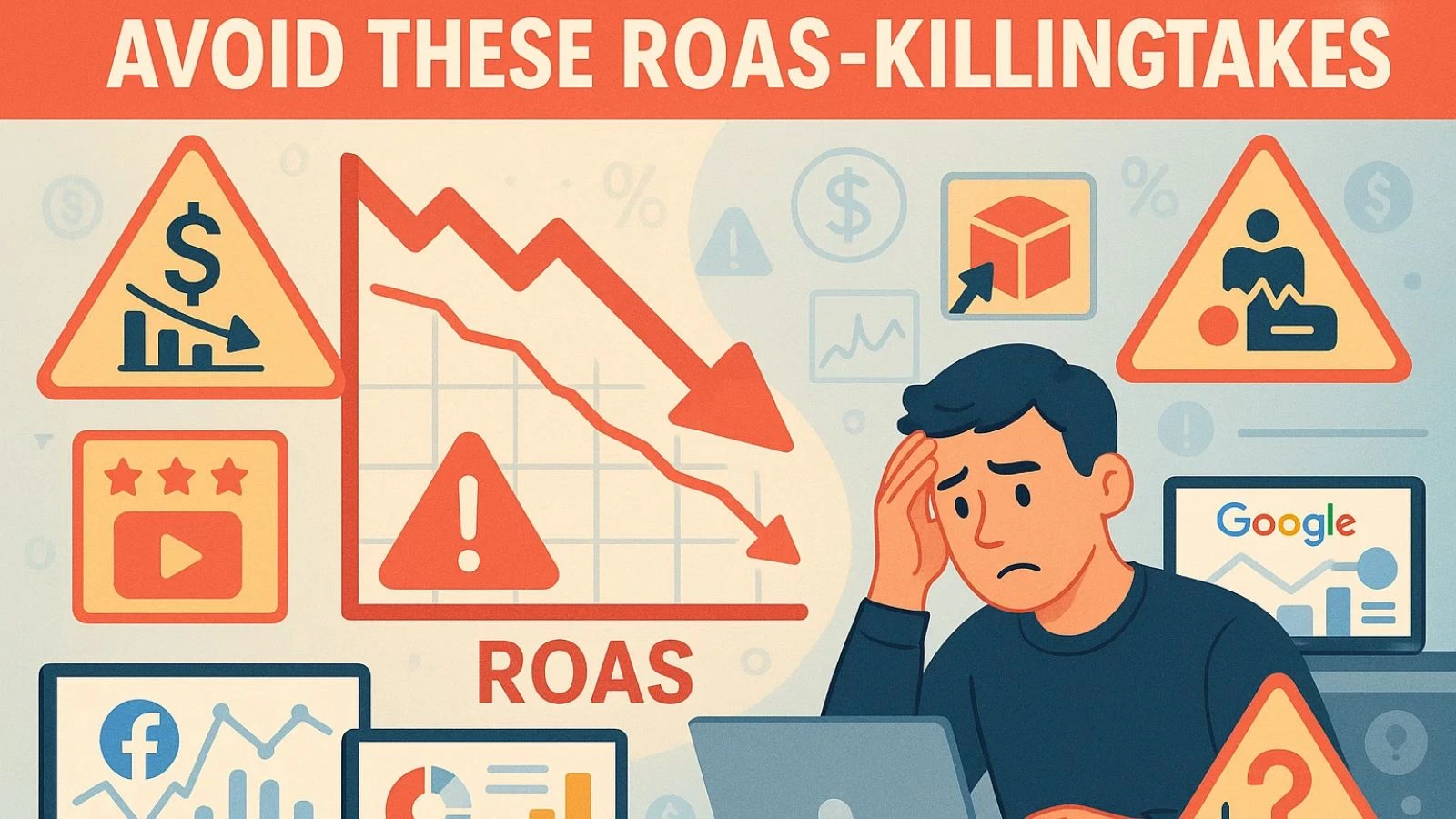How to Master the ROAS Formula to Scale Your Ad Campaigns
You’re spending money on ads, getting clicks, maybe even some sales, but you’re not really sure if you’re making money or just breaking even. I’ve been there, and it’s frustrating as hell. That’s exactly why understanding the ROAS formula changed everything for me, and it’ll do the same for you.
Running ads without tracking ROAS is like driving with your eyes closed. You might be moving forward, but you have no idea if you’re headed toward success or straight off a cliff.
In this guide, I’m going to walk you through everything you need to calculate and use the ROAS formula to actually scale your campaigns without burning through cash.
You can Listen to this blog here,
What Exactly is ROAS, Anyway?
ROAS stands for Return on Ad Spend. The ROAS full form in digital marketing might sound fancy, but really, it’s just telling you one simple thing:
How much money are you making back for every dollar you spend on ads?
Here’s what I love about ROAS – it cuts through all the BS metrics.
Who cares if you got 10,000 impressions or a 5% click-through rate if you’re losing money?
The ROAS formula tells you what actually matters: are your ads profitable or not?
Think about it this way. Let’s say you give me $100 and I give you back $400. You’d probably want to keep doing business with me, right?
That’s essentially what a good ROAS looks like – you’re getting back more than you’re putting in.
Once you nail down your ROAS formula, you can make smart decisions about where to spend more and where to cut your losses.
The ROAS Formula (It’s Simpler Than You Think):
Okay, here’s the actual formula:
ROAS = Revenue from Ads ÷ Cost of Ads
That’s it. Seriously. No complicated math needed.
Let me show you how this works with a real example. Last month, I spent $2,000 on a Google Ads campaign.
That campaign brought in $10,000 in sales. So my return on ad spend formula calculation looks like this:
ROAS = $10,000 ÷ $2,000 = 5
This means I made $5 for every $1 I spent. Pretty straightforward, right?
Now, you’ll see this number written different ways, and they all mean the same thing:
As a ratio: 5:1
As a multiple: 5x
As a percentage: 500%
I personally like using the ratio because it’s easiest to explain. “We’re making 5 dollars for every dollar we spend” just sounds better than “we have a 500% return.”
How to Actually Calculate Your ROAS?
Here’s where most people mess up. They think they can just look at their ad dashboard and call it a day. Not quite.
Figure Out Your Real Revenue: First, decide what revenue actually counts. Are you tracking the full sale price, revenue after returns, or just the profit margin?
I usually go with the full sale price for simplicity, but if you have lots of returns, be more conservative.
Track Every Dollar You Spend: Your ad spend isn’t just what you pay Facebook or Google. Include the actual platform costs, agency fees if you’re working with one, and the tools you use.
Some people only count platform spend when using the ROAS Calculation formula, and that’s fine too. Just be consistent.
Make Sure You’re Tracking Sales Correctly: This is huge. You need to know which sales came from which ads.
Set up UTM parameters, install Facebook Pixel or Google Tag correctly, and double-check conversions are being recorded.
I can’t tell you how many times I’ve seen people freak out about “bad ROAS” only to discover their tracking was broken.
Break It Down: Don’t just calculate one big ROAS number. Break it down by campaigns, ad sets, specific ads, audiences, and time periods.
You might have an overall ROAS of 3:1, but when you dig in, you find one campaign doing 8:1 and another doing 0.5:1. Guess which one gets more budget?
ROAS Across Different Advertising Platforms:
The basic ROAS formula stays the same everywhere, but each platform has its quirks.
1. Google Ads:
Google makes tracking ROAS pretty easy if you set up conversion tracking properly. They even have automated bidding where you tell Google your target ROAS and it’ll try to hit it.
Google Shopping campaigns usually crush it for e-commerce because people searching for products are ready to buy.
2. Facebook and Instagram:
The ROAS formula Facebook uses is identical to everywhere else, but tracking can get weird.
Facebook counts conversions within a time window – usually 7 days after someone clicks or 1 day after they view your ad.
Here’s the annoying part: Since the iOS 14 updates, Facebook’s tracking isn’t as accurate.
Your reported ROAS might look lower than it actually is. That’s why I calculate a “blended ROAS”—total revenue divided by total ad spend across all channels.
Pro tip: Facebook Ads Manager shows ROAS automatically as “Purchase ROAS” if your pixel is set up right.
3. Other Platforms:
The same ROAS formula in advertising works across TikTok, LinkedIn (usually lower ROAS but better B2B lead quality), Amazon, and Pinterest.
Just remember that what’s considered “good” varies between platforms.
What’s Actually Considered a “Good” ROAS?
Everyone asks this, and honestly, the answer is: it depends.
What affects your target: profit margins, business goals, customer lifetime value, and your industry. Fashion brands might aim for 4:1, while B2B services might be happy with 2:1.
Here are some general benchmarks:
2:1 – Often breaks even once you factor in product costs
4:1 – Solid performance for most e-commerce businesses
6:1 – Really good, you’re doing something right
10:1+ – Exceptional, but usually not sustainable at scale
Here’s the thing: I’d rather have a 3:1 ROAS on $50,000 in ad spend than a 10:1 ROAS on $500 in ad spend. Scale matters just as much as efficiency.
Also Read:
How To Calculate Google Return On Ad Spend: 7 ROAS Calculation Tips
How PowerAdSpy Helps You Crush Your ROAS Goals?
So you understand the ROAS formula. But how do you actually improve your numbers consistently? This is where competitive intelligence becomes your secret weapon. I started using PowerAdSpy about a year ago, and it’s changed how I approach campaigns completely.
- Learning from What Already Works: Why waste money testing ads that might flop when you can see what’s already working? PowerAdSpy lets you see what ads your competitors are running and how they’re performing across Facebook, Instagram, Google, YouTube – basically everywhere that matters.
- PowerAdSpy shows you ads sorted by engagement: You can learn what creative styles perform best, which ad copy angles get engagement, and whether video or image ads work better. Starting with these insights means you skip the expensive testing phase and jump straight to profitable ROAS.
- Finding Audiences That Actually Convert: See what audiences your competitors target – which demographics they focus on, what locations they prioritize, and when they run campaigns. This is gold for improving your ROAS formula results because you’re targeting people who already respond well to your type of product.
- Cutting Down on Expensive Testing: Every failed ad test tanks your ROAS. PowerAdSpy helps you avoid those mistakes. By learning from the ads of your competitors’ campaigns, you can ensure spending on ad types that work the most
For example, if carousel ads consistently outperform single images in your industry, you know where to focus your creative budget.
For anyone serious about scaling ads profitably, having this intelligence is the difference between guessing and knowing what’ll work.
Real Strategies to Actually Improve Your ROAS:
Let’s talk tactics that move the needle.
1. Stop Looking at Averages Only:
Never just look at overall ROAS. Segment everything – prospecting separate from retargeting, new customers separate from repeat buyers, and different product categories.
Retargeting campaigns usually have ROAS of 10:1 or higher, while cold prospecting might be 2:1 or 3:1. Both are important but serve different purposes.
2. Think Beyond the First Purchase:
Most ROAS calculations only look at the initial sale. But smart marketers think bigger.
If your average customer buys three times, your real ROAS is way higher than that first-purchase number shows.
Calculate customer lifetime value and work backwards to figure out what you can afford to pay for acquisition. This is especially important for subscription businesses.
3. Test Smart, Not Random:
Test one thing at a time – different images, new audiences, various placements. Don’t change everything at once.
Give tests enough time – usually at least 50-100 conversions before making big decisions. This protects your ROAS formula from premature optimizations that hurt performance.
4. Fix Your Landing Pages:
Your ads might be perfect, but if your landing page sucks, your ROAS will too. I’ve seen landing page tweaks improve ROAS by 30-40% without touching the ads.
Focus on fast loading times, clear value propositions, easy checkout, trust signals like reviews, and mobile optimization.
A 2% conversion rate versus 3% is a 50% improvement in your ROAS right there.
5. Retargeting is Your Best Friend:
Want easy ROAS wins? Set up proper retargeting campaigns. People who have already visited your site convert at much higher rates.
My retargeting campaigns consistently hit 8:1 to 12:1 ROAS. Set up audiences for website visitors who didn’t buy, cart abandoners, past customers for repeat purchases, and engaged social media users.
These campaigns deliver the best ROAS compared to cold traffic.
Common Mistakes That’ll Kill Your ROAS:
Ignoring Your Profit Margins:
A 5:1 ROAS sounds amazing until you realize your product costs eat up 70% of revenue. Always factor in costs.
Your breakeven ROAS is 1 divided by your profit margin. If you keep 30% profit after costs, your breakeven is 3.33:1.
Anything below that means you’re losing money even with decent-looking ROAS numbers.
Comparing Different Campaign Types:
Don’t panic when your prospecting campaign ROAS is lower than retargeting. They’re not supposed to match.
Prospecting brings in new people (lower ROAS but necessary for growth). Retargeting converts people who already know you (higher ROAS but limited scale). You need both working together.
Making Decisions Too Fast:
Someone launches a campaign, checks it after one day, sees low ROAS, and kills it. Don’t do this.
Give campaigns time to optimize. Facebook needs at least 50 conversions to really learn. Google needs time, too.
Don’t make major changes based on tiny sample sizes, or you’ll never achieve consistent ROAS formula results.
Trusting Only One Data Source:
Facebook says 4:1 ROAS. Google Analytics says 2.5:1. Your sales data shows something else. Use multiple sources and understand why they differ.
Your source of truth should be actual money in your bank account, not just what ad platforms report.
Scaling Without Tanking Your ROAS:
This is the ultimate challenge – spending more while keeping performance strong.
Increase Budgets Gradually:
Don’t immediately 5x the budget. The algorithm needs time to adjust. I typically increase by 20-30% every few days, watching the ROAS formula closely.
If it holds steady, I keep scaling. If it drops significantly, I pull back.
Scale Horizontally Too:
Instead of pumping more money into one campaign, duplicate what’s working.
Launch in new geographic areas, create similar campaigns with new audiences, test the same ads on different placements, and expand to additional platforms.
This protects the ROAS of your winning campaigns while growing reach.
Keep Creatives Fresh:
As you scale, people see your ads more often and stop paying attention – that’s ad fatigue.
Combat this by creating multiple versions of successful ads, rotating creatives regularly, and testing new formats.
Fresh ads maintain engagement and protect your ROAS formula at scale.
Wrapping This Up:
Mastering the roas formula in digital marketing isn’t rocket science, but it requires paying attention to the right metrics and making data-driven decisions.
Start by calculating your ROAS formula correctly, break it down by campaign and audience, and focus on segments that actually perform.
Use tools like PowerAdSpy to learn from what’s already working, test strategically, and scale gradually.
The difference between struggling advertisers and successful ones comes down to knowing their numbers and making smart decisions based on data.
FAQ’s:
Q1: What’s the basic ROAS formula?
Ans: It’s Revenue from Ads divided by Ad Spend. If you spend $1,000 and make $5,000, your ROAS is 5:1.
Q2: How is ROAS different from ROI?
Ans: ROAS only looks at ad spend, while ROI considers all business costs. ROAS is more useful for evaluating specific campaign performance.
Q3: What’s a good ROAS for Facebook ads?
Ans: Most e-commerce businesses aim for 4:1 to 6:1, but it depends on your margins and business model. B2B might be happy with 2:1 to 3:1.
Q4: Why is my ROAS different across platforms?
Ans: Each platform tracks and attributes conversions differently with different attribution windows. That’s completely normal.
Q5: How often should I check ROAS?
Ans: Daily monitoring is good for spotting trends, but only make big decisions based on weekly or bi-weekly data once you have enough conversions.

